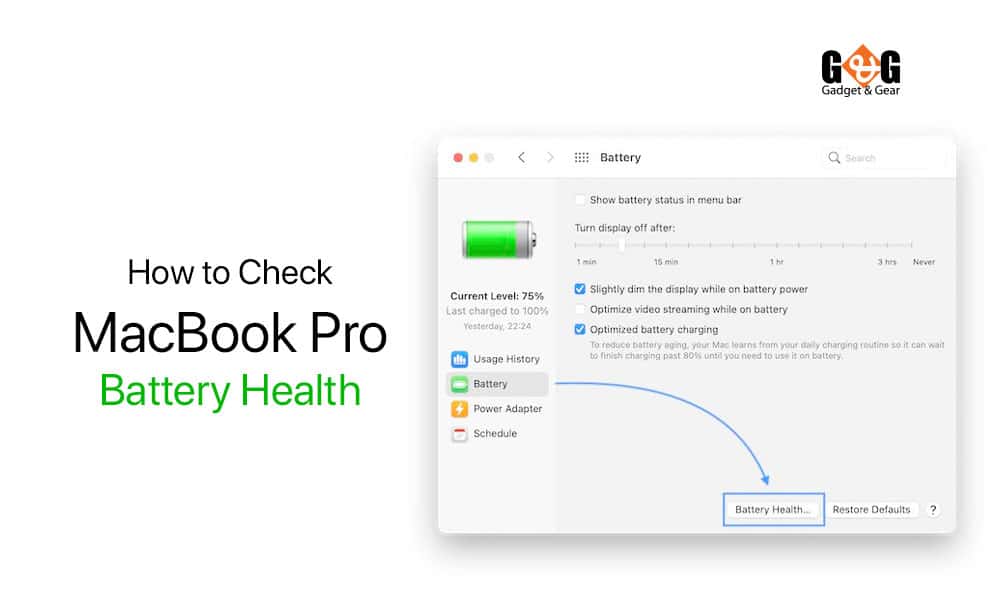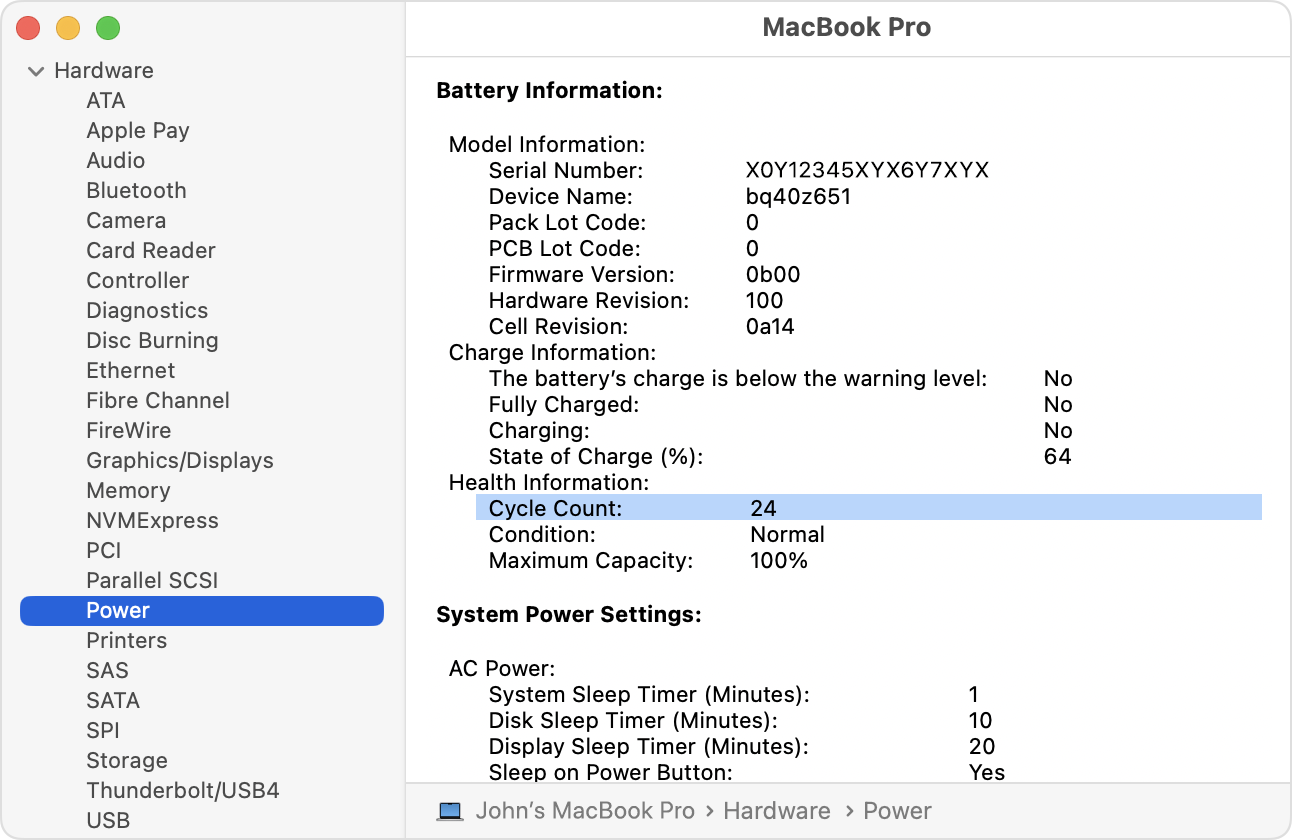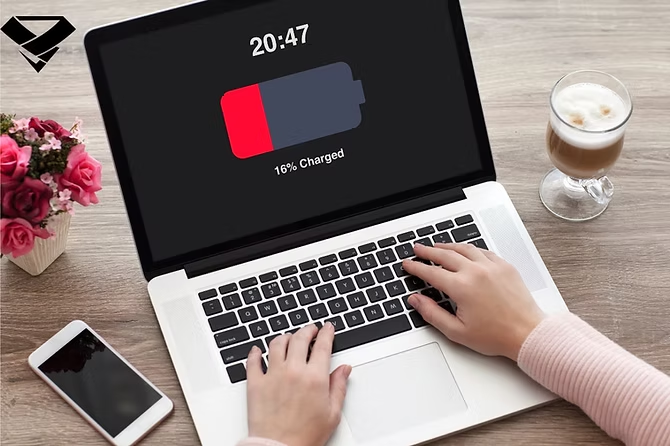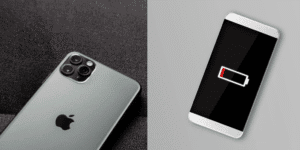Is your laptop battery draining faster than usual or refusing to charge past a certain percentage? Before jumping to conclusions or booking a replacement, it’s essential to check laptop battery health. Both Windows and macOS offer built-in tools that let you assess whether your battery is still in good condition or if it’s time for a replacement.
This guide walks you through how to check battery health on your own, what the results mean, and how to tell if it is time for a replacement.
Why Checking Battery Health Matters
Laptop batteries naturally degrade with time. Most lose capacity after 300 to 500 charge cycles, depending on use and model. By checking your battery health, you can:
- Avoid unexpected shutdowns or poor performance
- Detect battery swelling or wear before damage occurs
- Decide whether to repair, replace, or continue using the laptop as-is
- Prevent overspending on unnecessary parts
How to Check Laptop Battery Health on Windows

Windows has a built-in tool to generate a detailed battery health report using a single command.
🔧 Step-by-Step (Windows 10 & 11)
- Press
Windows + X, then choose Command Prompt (Admin) or Windows Terminal (Admin) - Type the following command and press Enter: bashCopyEdit
powercfg /batteryreport - The system will generate an HTML file at this path:
C:\Users\[YourUsername]\battery-report.html - Open the file in your browser to view your battery report
🧠 Key Things to Look At:
| Section | What It Tells You |
|---|---|
| Design Capacity | Original full capacity when new |
| Full Charge Capacity | Current max capacity (after wear) |
| Cycle Count | Number of full charge-discharge cycles |
| Battery Life Estimates | Runtime based on usage |
If your full charge capacity is below 80% of design capacity, it’s usually time to consider replacement.
How to Check Battery Health on macOS

Apple laptops make it easy to check battery health and cycle count directly from macOS settings.
🔧 macOS Steps (Ventura / Sonoma or later):
- Click the Apple logo > System Settings > Battery
- Under “Battery Health,” check the status:
- Normal = Good condition
- Service Recommended = Time to replace
- To view cycle count:
- Hold Option, click the Apple logo, then System Information
- Go to Power > Look for Cycle Count
Apple’s Guidelines:
- MacBook batteries are designed for 1,000 cycles on most models
- AppleCare+ covers battery replacement at no cost if health drops below 80%
Tip: Even if the status says “Normal,” a cycle count over 800–900 may mean reduced performance and shorter runtime.
What Is a Healthy Battery Percentage?

| Battery Health (%) | What It Means |
|---|---|
| 90–100% | Excellent – near new condition |
| 80–89% | Still good – no action needed |
| 70–79% | Degraded – replacement recommended |
| Below 70% | Worn out – may cause shutdowns or bloating |
Cycle count is also important. Even a 90% battery with 1,000 cycles is nearing end of life.
When to Replace Your Laptop Battery
It might be time to replace your battery if:
- It holds less than 2 hours of charge under light use
- The health percentage is under 80%
- It shuts down without warning
- You see “Service Battery” or “Replace Soon” warnings
- The battery is swollen or physically deformed
To compare current replacement options and pricing, check our Battery Laptop Replacement Guide (insert actual internal link).
FAQ: Checking Battery Health
1. How often should I check my battery health?
Every 3–6 months is ideal, or whenever you notice battery-related performance drops.
2. Can I improve battery health once it’s degraded?
No. Battery health is physical degradation. You can slow it with good charging habits, but it cannot be reversed.
3. What’s the difference between design capacity and full charge capacity?
Design capacity = what the battery could hold when new. Full charge = what it can hold now. The bigger the gap, the more wear.
4. Can third-party tools help?
Yes, tools like HWMonitor (Windows) or CoconutBattery (Mac) give deeper insights, but built-in reports are usually sufficient.
5. Is a battery with 500+ cycles still usable?
Yes, but likely with reduced battery life. If you rely on portability, consider replacing it soon.
Final Thoughts
Learning how to check laptop battery health gives you control over your device’s performance and lifespan. Whether you’re on Windows or macOS, it only takes a few minutes to understand your battery’s condition—and take action if needed.
If your battery report shows heavy degradation or swelling, it may be time for a replacement. See our full Battery Laptop Replacement Guide for typical costs, service timelines, and how to avoid upselling traps in Singapore.





